1. Introduction
Chapter 8
Motion
Introduction
• One of the most common phenomena in the physical world is motion. Mechanics is the branch of Physics that deals with the behaviour of moving objects.
• Mechanics is divided further into two sections: Kinematics and Dynamics.
• Kinematics is the study of motion without regard for the cause of motion.
• Dynamics is concerned with the source of motion, which is force.
Motion and Rest:
• An object is said to be in motion if its position in relation to its surroundings changes in a given time.
• An object is said to be at rest if its position in relation to its surroundings does not change.
• A frame of reference is another object or scene against which we compare the position of an object.
Types of Motion:
There are three types of motion:
• Translatory motion
• Rotatory motion
• Vibratory motion
Translatory Motion:
• A particle in translatory motion moves from one point in space to another. This movement may be in a straight line or in a curved path.
• Rectilinear motion is defined as motion along a straight line.
• Curvilinear motion is defined as movement along a curved path.
• As an example, consider a car driving down a straight road.
Rotatory Motion:
The particles of the body describe concentric circles around the axis of motion in rotatory motion.

Vibrational Motion:
Particles in vibratory motion move back and forth around a fixed point.
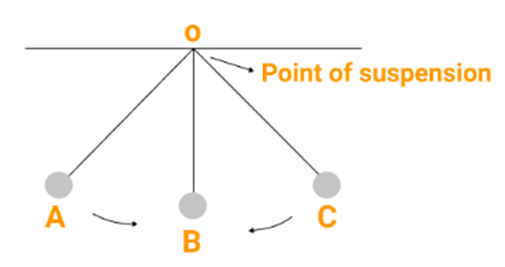
2. Scalar and Vector Physical Quantities
Scalar quantities
The quantities that depend upon magnitude and not the direction is called scalar quantities. They are represented as their own symbol.
Vector quantities
A physical quantity that depends upon magnitude as well as direction. They are represented by putting on their symbol.
Distance and Displacement:
Distance
• The distance travelled by a moving object is the length of the path the object takes.
• The measure of distance is a scalar quantity. The meter is the SI unit of distance.
Displacement
• It is the shortest path covered by a moving object in a specified direction from the point of reference (the initial position of the body).
• The meter is the SI unit of displacement.
• Displacement is a vector, which means that it is represented by a number with appropriate units and direction.
Difference between Distance and Displacement
|
Distance |
Displacement |
|
Distance provides the complete details of the path taken by the object |
Displacement does not provide the complete details of the path taken by the object |
|
Distance is always positive |
Displacement can be positive, negative or zero |
|
It is a scalar quantity |
It is a vector quantity |
|
The distance between two points may not be unique |
The displacement between two points is always unique |
3. Uniform and Non-Uniform Motion
Motion
Uniform Motion and Non-uniform Motion:
- If the body covers equal lengths in equal time intervals, so it is assumed to have a Uniform Motion.
- If the body covers unequal distances at equal intervals or equal distances at unequal intervals, so the body is said to have Non-uniform Motion.
Speed
Speed is defined as the total distance travelled by the object in the time interval during which the motion takes place. SI unit of speed is meter per second.
Speed = Distance Travelled / Time Taken
Velocity
The velocity of a body is known as the rate of change of displacement of a body with the passage of time. The velocity of a moving object is measured in meters per second in SI units.
Acceleration
Acceleration is a measure of the change in the velocity of an object per unit of time. SI unit of acceleration is ms-2. The equation can mathematically be written as:
Uniform Acceleration
The body is said to have a uniform acceleration if it is going on a straight path and the velocity shifts (increases or decreases) by equal proportions at equal time intervals.
Non-Uniform Acceleration
A body is said to have a non-uniform acceleration if the velocity shifts (increases or decreases) by unequal proportions at unequal time frames.
4. Derivation of Equation of Motion - Graphically,Circular Motion
Equation of motion by graphical methods
(i) Distance -Time Graph
• Distance – Time Graphs represents a change in position of the object with respect to time. The graph in case the object is stationary (means the distance is constant at all time intervals) – Straight line graph parallel to x = axis
• For a distance-time graph, time is taken on x-axis and distance is taken on the y-axis.
• For a body at rest, as the slope is zero, so the speed of the body is zero
• For a body moving with uniform speed
• For an accelerated motion., the slope of the graph is increasing with time
• For decelerated (speeding down) motion, the slope of the graph is decreasing with time.
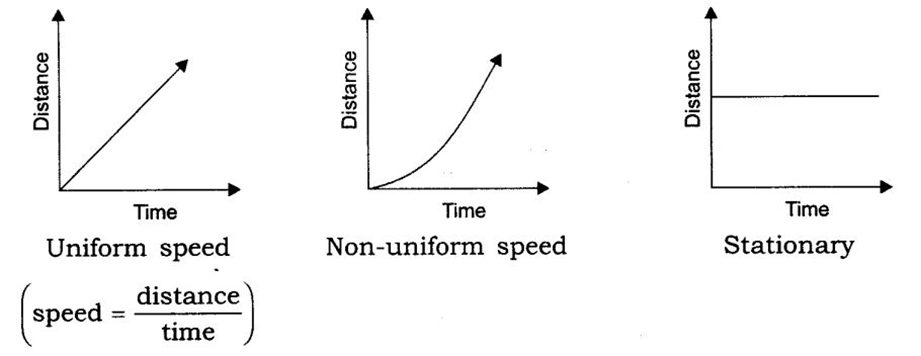
(ii) Velocity- Time Graph
• Constant velocity is a straight-line graph, velocity is always parallel to the x-axis. When a body is moving with a uniform velocity, the slope of AB indicates zero acceleration.
• When a body starts from rest and moves with uniform acceleration, then it is greater is the slope of the v-t graph, greater will be the acceleration.
• When a body is moving with uniform acceleration and its initial velocity is not zero.
• When a body is moving with increasing acceleration, the slope gradually increases with time.
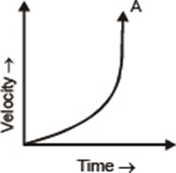
• When a body is moving with decreasing acceleration, the slope decreases with time.
• When a body is moving with uniform retardation and its initial velocity is not zero, as θ > 90°, the graph has a negative slope.
Derivations
(i)velocity-time relation:
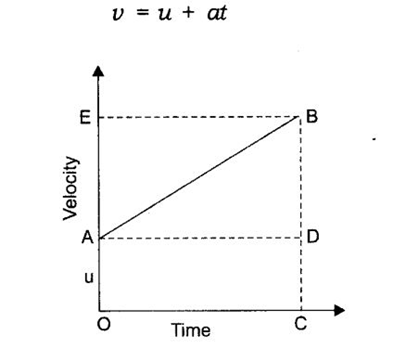
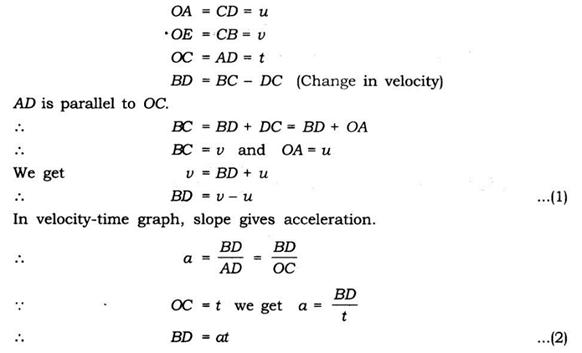

(ii) Position-time relation:
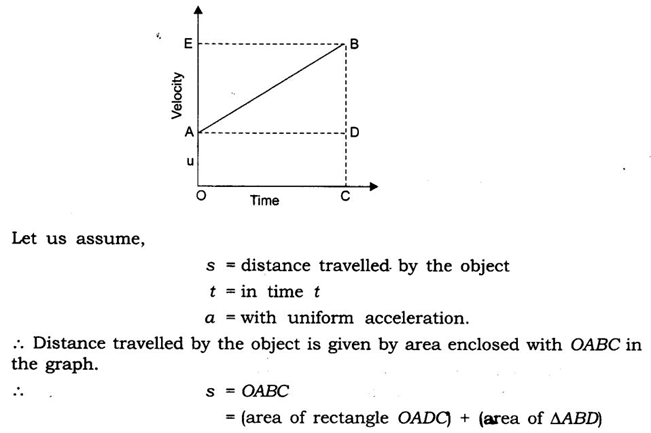
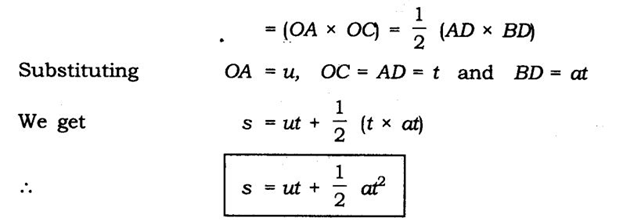
(iii) Position-velocity relation:
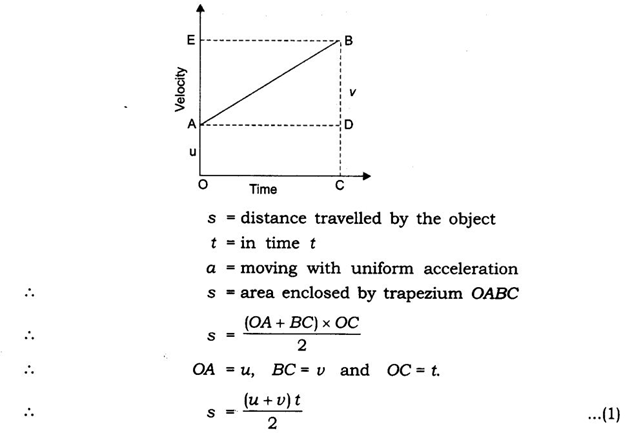
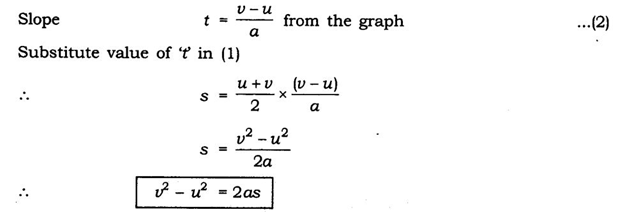
Uniform circular motion
When a body moves in a circular path with uniform speed, its motion is called uniform circular motion.
1. Introduction
Force and Laws of Motion
Introduction
What is Force?
It is a push or pulls on an object that produces an acceleration in the body on which it acts. S.I. unit of force is Newton.
A force can do three things on a body.
• It can change the speed of the body.
• It can change the direction of motion of a body.
• It can change the shape of a body.
Balanced Forces – When equal amounts of forces are applied to an object from different directions such that they cancel out each other, such forces are known as balanced forces.
• Balanced forces do not change the state of rest or motion of an object.
• Balanced forces may change the shape and size of an object.
• If forces nullify one another then their resultant force is zero.
Unbalanced Force – When forces applied to an object are of different magnitude (or not in opposite directions to cancel out each other), such forces are unbalanced forces.
• Unbalanced forces can alter the state of rest or motion of an object.
• Unbalanced forces can cause acceleration in an object.
• Unbalanced forces can change the shape and size of an object.
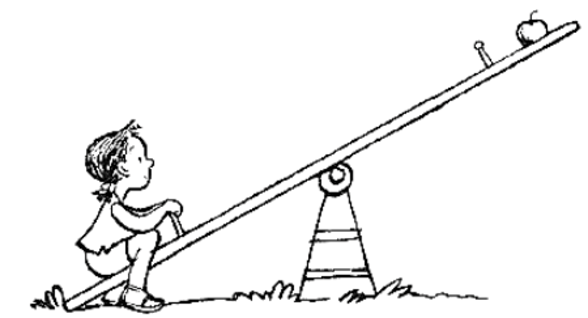
2. Newton's Law of Motion
Force of Friction
It is a force extended when two surfaces are in contact with each other. It always acts in a direction opposite to the direction of motion of the object.
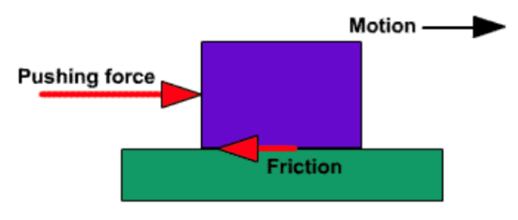
First law of motion: An object remains in a state of rest or of uniform motion in a straight line unless acted upon by an external unbalanced force.
Inertia: The natural tendency of an object to resist a change in their state of rest or of uniform motion is called inertia.
1. The mass of an object is a measure of its inertia.
2. Its S.I. unit is kg.
3. A body with greater mass has greater inertia.
Example of Inertia
• We fall back when a vehicle starts moving in the forward direction because our body is in the rest state and it opposes the motion of the vehicle.
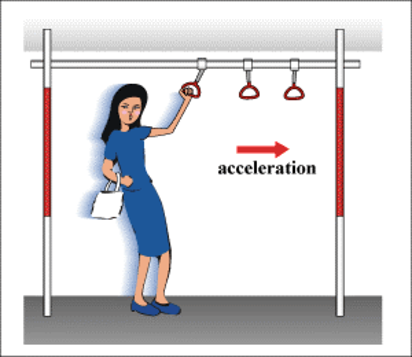
The second law of motion: The rate of change of momentum of an object is proportional to the applied unbalanced force in the direction of the force.
Momentum: The momentum of an object is the product of its mass and velocity and has the same direction as that of the velocity.
1.Its S.I. unit is kg m/s.
2.It is a vector quantity.
1 Newton: A force of one Newton produces an acceleration of 1 m/s2 on an object of mass 1 kg.
IN. = 1 kg m/s2 (F = ma)
For Example –
A cricketer when catches a ball pulls his hands in the backward direction to give some time to decrease the velocity of the ball. As the acceleration of the ball decreases the force exerted on catching the moving ball also decreases. If the cricketer would try to stop a moving ball suddenly, he would have to apply a larger force.
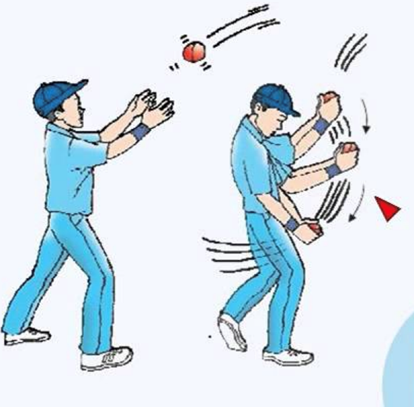
Third law of motion: To every action, there is an equal and opposite reaction and they act on two different bodies.
For Example, a ball when it hits the ground (action) bounces back with a certain force reaction.
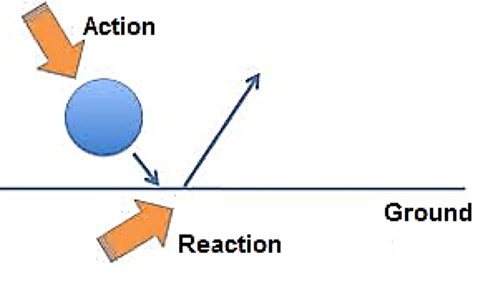
3. Law of Conversation of Momentum
Conservation of momentum
If the external force on a system is zero, the momentum of the system remains constant i.e., in an isolated system, the total momentum remains conserved.
Suppose A and B are two balls, they have mass m1 and m2 and initial velocities u1 and u2 as shown in above figure before collision. The two bodies collide and force is exerted by each body. There is change in their velocities due to collision.
1. Introduction
Chapter 10
Gravitation
Introduction
Gravitational force of Earth:
- If we release a small stone without pushing it from a height it accelerates towards Earth. The stone is when accelerated towards earth, means some force is acting on it.
- The force which pulls the object towards the centre of earth is known as gravitational force of the earth. Here, stone also attracts the earth.
- It means every object in universe attracts every other object.
- When a body undergoes circular motion, it experiences a force that acts towards the centre of the circle. This centre-seeking force is called a centripetal force.
Universal Law of Gravitation
- According to the universal law of gravitation, every object attracts every other object with a force.
- This force is directly proportional to the product of their masses.
- This force is inversely proportional to the square of distances between them.
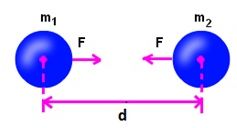
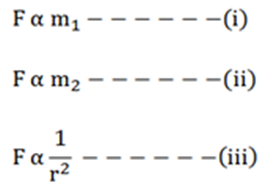
From the above equation we can rewrite them as the following:
![]()
If we remove the proportionality, we get proportionality constant G as the following:
![]()
According to, Newton’s universal Law of gravitation
G = Fr2/ m1 m2
SI Unit: Nm2 kg-2
Value of G = 6.673 × 10-11 Nm2 kg-2
The proportionality constant G is also known as the Universal Gravitational Constant.
Importance of universal law of gravitation
It explains:
- the force that binds us to the earth.
- the motion of moon around the earth
- the motion of planets around the sun.
- the tides due to the moon and the sun.
2. Gravitational Constant and its Units
Freefall
• When an object falls down towards the earth under the gravitational force alone, we say the object is in free fall.
• The velocity of a freely falling body changes and is said to be accelerated.
• This acceleration is called acceleration due to gravity, denoted by ’g’. Unit is m/s2.
• The motion of objects under the influence of gravity ‘g’ does not depend on the mass of the body. All objects fall at the same rate.
We know that, F= ma
Therefore, F = mg
The force (F) of gravitational attraction on a body of mass m due to earth of mass M and radius R is given by
![]()
g. But the acceleration due to gravity is represented by the symbol g. Therefore, we can write
h. F = mg ... (2)
i. From the equation (1) and (2), we get
![]()
j. When body is at a distance ‘r’ from the centre of the earth then
![]()
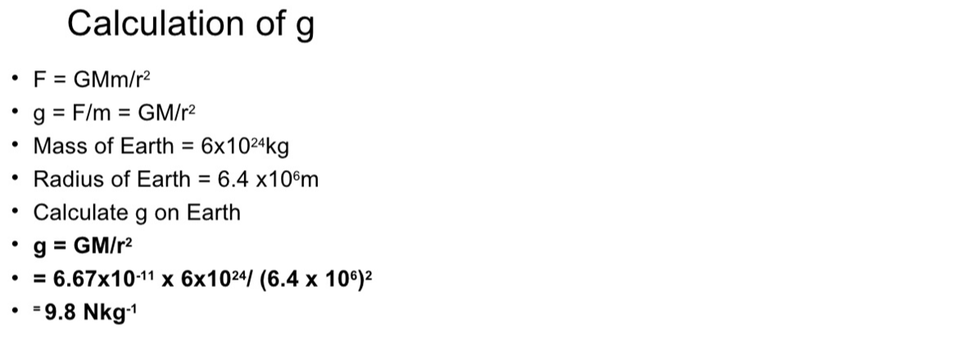
Weight of object on the moon
Just like the Earth, the Moon also exerts a force upon objects. Hence, objects on moon also have some weight. The weight will not be same as than on the earth. So, weight on the Moon can be calculated as -
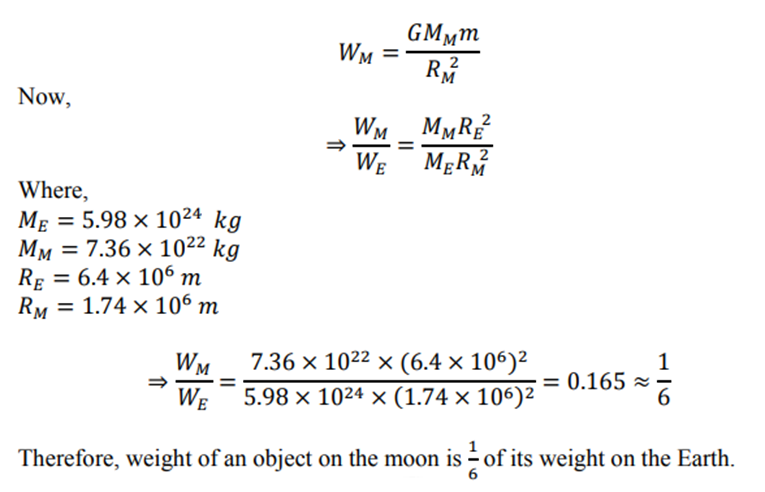
3. Weight and Mass
Mass:
• Mass of an object is the measure of its inertia.
• It is the matter present in it. It remains the same everywhere in the universe.
Weight:
• The force of attraction of the earth on the object is known as the weight of the object.
• It’s S.I. unit is Newton.
W = m x g
Thrust:
• The force that acts in the perpendicular direction is called thrust.
• It is similar to force applied to an object
• It is a vector quantity.
Pressure
• The force that acts per unit area of the object is pressure.
• It is the thrust per unit area.
• Pressure is denoted by ‘P'
• P = thrust/ area = force/ area = F/A
• SI unit: N/m2 or Pa (Pascal)
Applications of pressure
• The base of high buildings is made wider so that weight of the walls act over a large surface area and pressure is less.
• School bags are having broad strap so that the weight of the school bags fall over a large area of shoulder and produce less pressure and become less painful.
• All liquids and gases exist pressure in all direction.
4. Buoyancy and Density
Buoyancy
• Whenever an object is immersed in a liquid, the liquid exerts a buoyant force or upthrust in the opposite direction of the gravitational force. This is also called the Force of Buoyancy.
• It depends upon the density of the fluid.
• Therefore, an object is able to float in water when the gravitational force is less than the buoyant force.
• Similarly, an object sinks into the water when the gravitational force is larger than the buoyant force.
Archimedes principle
• According to the Archimedes principle, whenever an object is immersed in a liquid (fully or partially), the liquid exerts an upward force upon the object. The amount of that force is equivalent to the weight of the liquid displaced by the object.
Why does an object sink or float on water?
• An object can sink or float on water based on its density with respect to water. The density is defined as mass per unit volume.
• Objects having a density less than water float in it. For Example, Cork flows in water because its density is lower than that of water.
• Objects that have a density higher than water sink in it. For Example, Iron nail sinks in water because the density of iron is more than water's density.
Thus, we can conclude that buoyancy depends upon:
The density of the liquid
The volume of the object (as the volume of object increases, its density decreases and vice-versa
Application of Archimedes Principle:
• In evaluating relative density
• In designing ships and submarines
• In making lactometers and hydrometers
Relative Density
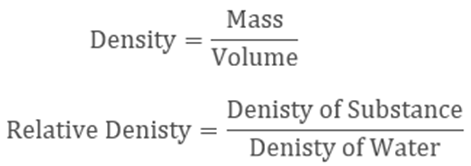
1. Introduction Part 1
Work and Energy
Introduction
Work done
Work done on an object is defined as the product of the magnitude of the force acting on the body and the displacement in the direction of the force. W = F.s
If a force acting on a body causes no displacement, the work done is 0. For example, pushing a wall.
Two conditions need to be satisfied for work to be done:
(i) A force should act on object
(ii) The object must be displaced
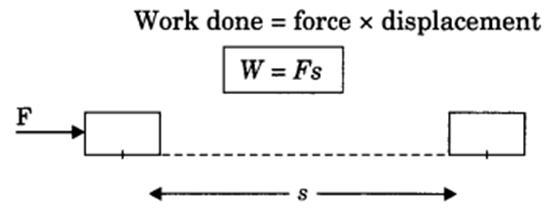
• W = Fs
If F = 1 N and s = 1 m
W= 1 N x 1 Nm
W = 1 Nm
1j =1 Nm
- 1 J is the amount of work done on an object when a force of 1 N displaces it by 1 m along the line of action of the force.
• Work done has only magnitude and no direction i.e., work is a scalar quantity.
• SI unit of work is joule (J).
• 1 joule (one joule)
2. Types of Work
Types of work
(i) Zero work: If the angle between force and displacement is 90°, then work done is said to be zero work.
Example: When a man carries a load on his hand and moves on a level road, work done by the man on the load is zero.
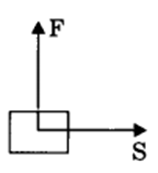
(ii) Positive work: Work done is said to be positive if force applied on an object and displacement are in the same direction.

Example: Work done by the force of gravity on a falling body is positive.
(iii) Negative work: Work done is said to be negative if the applied force on an object and displacement are in opposite direction.
W = -Fs
Here displacement is taken to be negative (-s).

Example: Work done by friction force is usually negative on a moving body.
3. Introduction Part 2
Energy
Energy of a body is defined as the capacity or ability of a body to do work.
The SI unit of energy is joule (J)
Forms of energy
There are various forms of energy in the nature, few of them are mechanical energy (potential energy + kinetic energy) heat energy, chemical energy and light energy.
1. Mechanical energy
Mechanical energy includes kinetic energy and potential energy.
a) Kinetic energy
The energy possessed by a body by the virtue of its motion is called kinetic energy.
Kinetic energy possessed by a body can be calculated by
EK=1/2 mv2
m = mass of body
V = velocity of body
Derivation of kinetic energy
Let us consider an object lying on a frictionless surface having mass ‘m’

A force of constant magnitude F is acting on the body. Here initial velocity of the body is u and final velocity is v. As there is no dissipative forces, work done on the body will be stored in the form of change in kinetic energy.
W=Fs
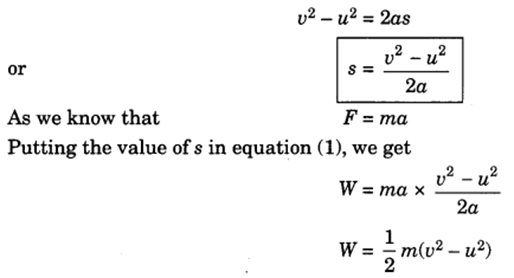
If the object is starting from a stationary position u = 0, then
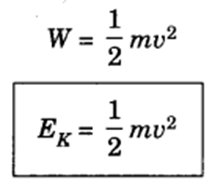
Factors affecting Kinetic energy
• Mass
• Velocity
• Momentum
b) Potential energy
The energy possessed by a body due to its position or configuration is called potential energy.
(i) Gravitational potential energy
Potential energy at any height (h) from a reference can be calculated by formula
Ep = mgh
where, m = mass of object
v = height from reference
The gravitational potential energy of an object at a point above the ground is defined as the work done in raising it from the ground to that point against gravity.
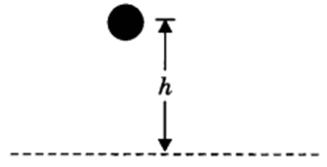
Derivation of potential energy
When work is done on the body, the work is stored in the form of energy. Consider an object of mass, m. Let it be raised through a height, h from the ground. A force is required to do this. The minimum force required to raise the object is equal to the weight of the object, mg. The object gains energy equal to the work done on it. Let the work done on the object against gravity be W.
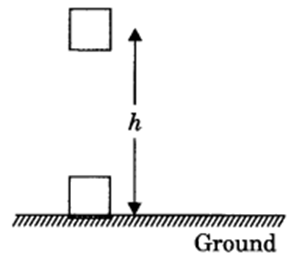
W = force x displacement
= mgh.
Since work done on the object is equal to mgh, an energy equal to mgh units is gained by the object. This is the potential energy (Ep) of the object.
Ep = mgh
1. Introduction
Sound
Introduction
• Sound energy is a form of energy because of which our ears are able to hear something.
• One cannot create sound or destroy it. But one can transform one form of energy into sound energy. For instance, when a cell phone rings, the sound is produced by converting electrical energy into sound energy.
• A wave that is produced when objects of the medium oscillate is called Mechanical Wave. The sound waves are therefore, mechanical waves.
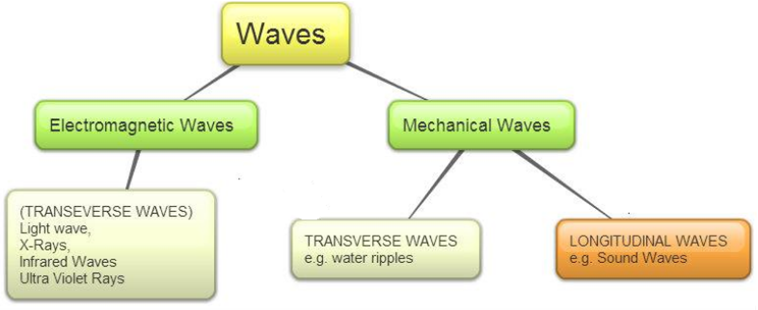
Types of Waves
• Sound cannot travel through the vacuum as it always needs a medium to propagate. The vacuum contains no air hence no particles can propagate sound.
Longitudinal waves - Any wave that vibrates in the direction of the motion is called a Longitudinal Wave. Sound waves are longitudinal because the particles of the medium vibrate in the direction which is parallel to the direction of the propagation of the sound waves. The particles in the medium oscillate to and fro in the case of longitudinal waves.
Transverse Waves - A transverse wave is produced when the particles of the medium oscillate in a direction which is perpendicular to the direction of the propagation of the wave. The particles in a transverse wave oscillate in an up and down motion. For Example, light waves are transverse in nature.
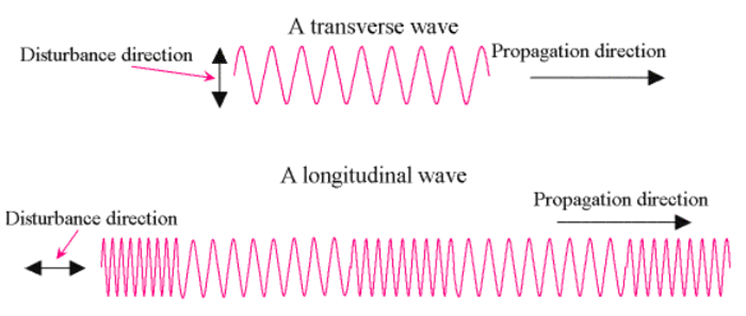
2. Characterstics of Sound
Characteristics of Sound
A sound wave is characterized by three factors:
• Amplitude
• Frequency
• Speed
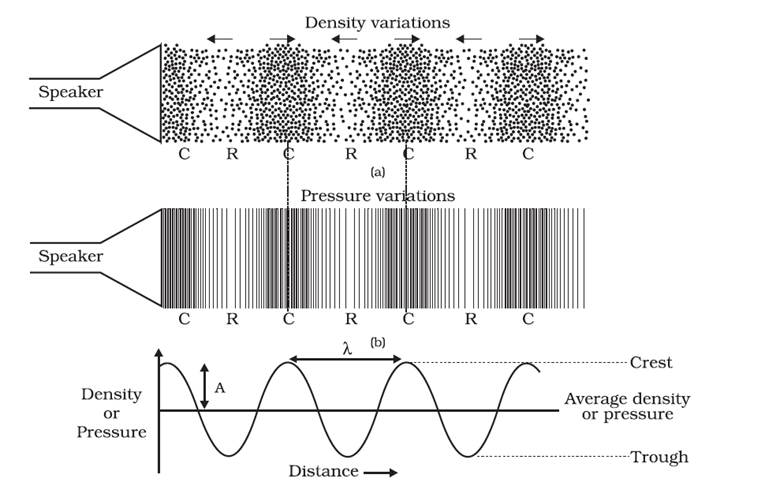
Sound cannot travel at the same speed in different mediums. The speed of sound in a medium is affected by three things:
• The density of the medium. For instance, speed of sound is the maximum through solids
• The temperature of the medium. As the temperature increases, the sound propagates easily.
• Humidity in the air also affects the travel of sound. As the humidity increases, so does the propagation of sound.
Properties of Sound Waves:
Frequency: Number of oscillations of sound waves is called its frequency. The number of peak and troughs per unit of time will give frequency. It is represented by v (nu) and its SI unit is Hertz (Hz).
Time Period: The time taken to complete one oscillation is called its time period. Its unit is second and is represented by T.
Relation of frequency and time period:
v = 1/T
Amplitude: The magnitude of the maximum disturbance in the medium on either side of the mean value is called the amplitude of the wave. It is usually represented by the letter A. Its unit is meter. Softness or Loudness of Sound: If the amplitude is smaller than the sound will be softer and if it is larger than sound will be louder. Higher amplitude helps the sound wave is travelling faster.
Sonic Booms
• When an object travels in the air with a speed greater than that of the sound, it produces a sound with high energy.
• This energy is loud enough that it can break glasses or damage the buildings. The sound produced is similar to the sound of an explosion or thunderclap.
• These objects exert a large amount of pressure on the air which causes the production of shock waves in the air.
• These shock waves produce extremely large and loud sound waves which are called Sonic booms.
• Speed of light in air = 3 * 108 m/s
• Speed of sound in air = 344 m/s
This clearly states that sound travels a lower speed than that of light in air. This is a reason why at the time of lightening, the light is visible instantly while the sound of the thunder reaches our ears after a few seconds.
3. Reflection of Sound and Its Applications
Laws of reflection
• The incident sound wave, the reflected sound wave and the normal, all lie in the same plane.
• The angle of incident of incident sound wave is equal to the angle of reflection formed by the reflected sound wave, that is, i = r
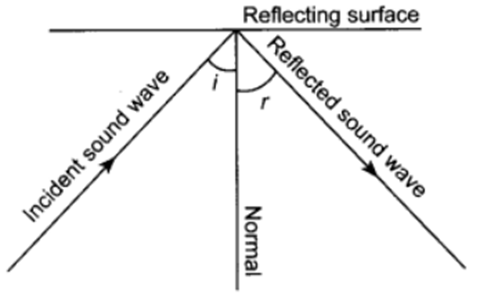
Echo
• When we hear the same sound again and again in a medium it is called Echo.
• The sound or echo persists in our brain for 0.1 seconds. This means that the difference between sound and its echo should be at least 0.1 seconds.
• It is produced as a result of reflection of sound through a medium. If sound reflects more than once we may hear multiple echoes.
Reverberation: Repeated reflections of sound results in persistence of sound and is called reverberation.
Use of Reverberation of Sound: Following instruments use this property of sound:
1. Megaphones, Shehanais, Trumpets
2. Stethoscope
3. Curved dome of concert halls
Advantages of Multiple Reflection of Sound
• Horns, trumpets, loudhailers or megaphones are designed in such a way that sound can travel in a particular direction only without spreading out everywhere. This makes it easier for the audience to listen to the speaker. All these instruments work on the phenomena of multiple reflections of sound.
• The multiple reflections in a stethoscope tube make it possible for the doctors to listen to a patient’s heartbeat.
• Concert halls are generally covered so that sound can reflect through it and reach the wider audience.
• Human auditory range is between 20 Hz and 20000 Hz.
4. Ultrasound's and its Application
Ultra Sound
The ultrasound waves are the sound waves with high frequency. Due to this, they can travel long distances despite any obstacles between their paths.
Application of Ultra Sound
• The ultrasound waves are used in clearing parts of objects that are hard to reach such as a spiral tube or electronic components. In order to clean the objects, they are put in a solution, then the ultrasonic waves are passed through the solution. As a result, the dust particles on the object get detached and fall off them.
• Ultrasound waves can recognize tiny cracks in metallic objects that are used in the manufacture of large structures, buildings and scientific equipment. The presence of such cracks can lower the strength of these structures and machines. Hence, the ultrasound waves are passed through the metallic objects and detectors are used to detect the waves that pass through the cracks. If a crack is present the ultrasound waves would reflect back.
• Ultrasonic waves are also used in a medical process called Echocardiography. In this process, the ultrasound waves are passed through various parts of the heart in order to form the images of the organ.
• Ultrasonic waves are also used in a procedure called Ultrasonography. In this procedure, the ultrasonic waves are passed through the internal organs of the body in order to get their image. In this way, the doctors can find out the cause of a disease or any abnormalities in the organs. The ultrasound waves travel through the tissues of the body and as soon as the density of the tissue changes, they reflect back. The reflected waves are then converted into electrical signals which form the images of the internal organs.
• Ultrasound waves are also used to break the kidney stones.
SONAR – Sound Navigation and Ranging
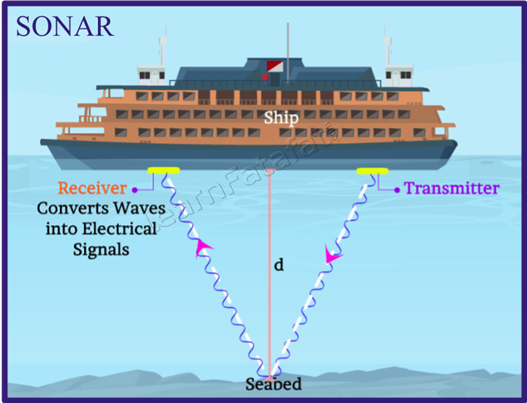
• This device is used to find the distance, direction and speed of objects that are present under the water. It uses Ultrasonic waves to do so.
• The Sonar consists of two main devices – The transmitter and the detector (or receiver). The main function of the transmitter is the production and transmission of the Ultrasonic waves in water.
• As these waves travel underwater, they, when hit by an object, reflect back to the detector. The detector then converts these sound waves into electrical signals which are then interpreted.
• The distance of the object is calculated with the help of the speed of sound in water and time taken by the way to reach the detector. This process is called Echo Ranging.
Uses of Sonar
• Finding the depth of a water body such as sea
• Detecting the presence of underwater objects like submarines, hills, icebergs and ships
The Human Ear
The ear is a sensitive organ of the human body. It is mainly involved with detecting, transmitting and transducing sound and maintaining a sense of balance is another important function of the human ear. Human ear includes:
• The outer ear or the visible part of the ear is called the pinna.
• Pinna collects sound from the surroundings.
• Sound passes through a tube called an auditory canal.
• Eardrum (tympanic membrane) vibrates in response to incident sound waves.
• Vibrations are amplified and transmitted further by three bones hammer, anvil and stirrup in the middle ear to the inner ear.
• In the inner ear, cochlea converts pressure signals into electrical signals.
• Electrical signals are transmitted by the auditory nerve to the brain for interpretation.
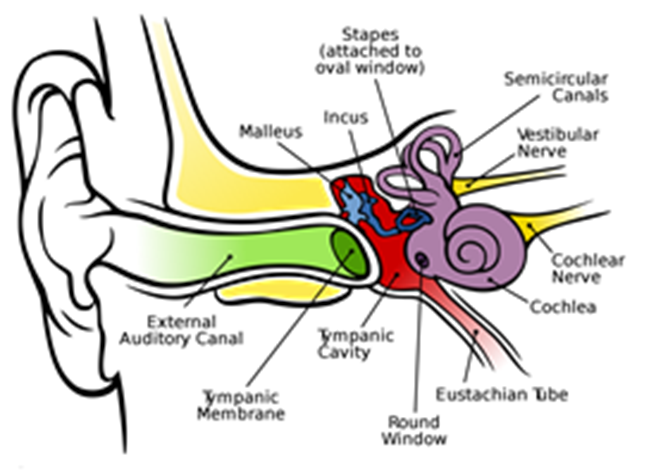
Structure of Human Ear
4. Law of Conversation of Energy
Law of Conservation of Energy
Energy can neither be created nor destroyed, it can only be transformed from one form to another. The total energy before and after transformation remains the same.
Total energy = KE + PE
For example: consider a ball falling freely from a height. At height h, it has only PE = mgh.
By the time it is about to hit the ground, it has a velocity and therefore has KE=
mv2. Therefore, energy gets transferred from PE to KE, while the total energy remains the same.
Power (P)
Power is defined as the rate of doing work or rate of transfer of energy.
Power = work/time
P=W/T
• Unit of power is watt (W).
Watt
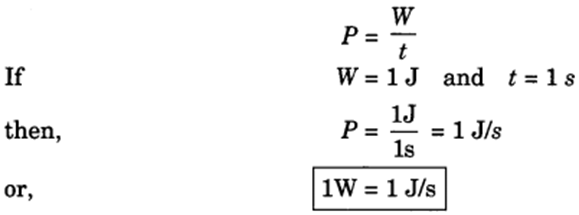
Commercial unit of energy
• Kilowatt hour (kWh) or 1 unit
• The energy used in households, industries and commercial establishments are usually expressed in kilowatt hour.
• 1 kWh is the energy used in one hour (1 h) at the rate of 1000 J/s or (1 kW).
∴1 kWh =l kW x U = 1000 W x 3600 s = 3600000 J
1 kWh = 3.6 x 106 J = 1 unit
Power can also be represented as,
P = Fv
F = force applied
v = velocity of object
P=W/t=Fs/t=Fv

 Science Made Easy
Science Made Easy
 ACERISE INDIA
ACERISE INDIA
